Image Above: ©Olivier Zahm (Olivier Zahm at The Standard, High Line, New York, 2011)
ANDREA BLANCH: Why the name “Purple”?
OLIVIER ZAHM: It’s an interesting color, with a sexual connotation in the world of flowers and na- ture, but also a very spiritual one in the religious world. If you add nature and culture, you have what we call the human planet, which is a beautiful planet with a terrible history of murder, torture, pollution, and abuse. “Purple” combines beauty, humanity, and hope. If you hope, it’s because you’re scared, not because you’re happy or unconscious. You hope for a better planet or a better world or a better time. This is why we’re doing the magazine, because we are not happy, we are not satisfied, and we are not glamorous, so far. We always believe that we used to be happy and sexy and satisfied. When we were 3 or 4 years old, and when humanity was 3 or 4 years old, we believed in this illusion. I don’t. I believe in the future, but the future is also extremely terrifying. This is all in the color “purple.”
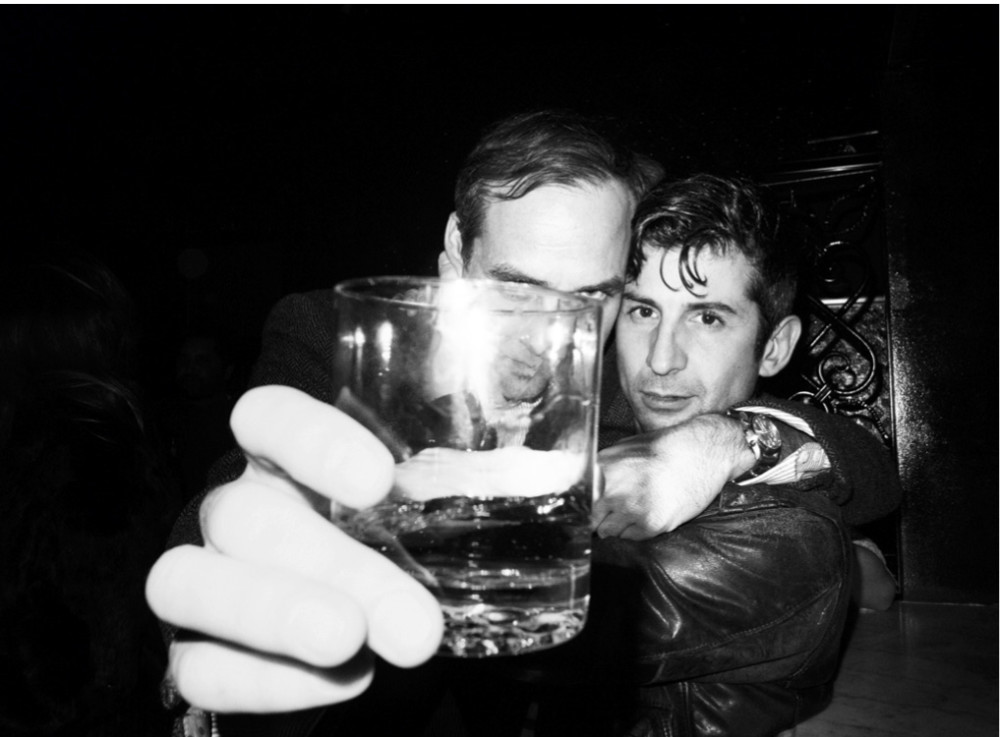 ©Olivier Zahm (Paul Sevigny and André Saraiva at the opening of the club Paul & André, Los Angeles, 2011)
©Olivier Zahm (Paul Sevigny and André Saraiva at the opening of the club Paul & André, Los Angeles, 2011)
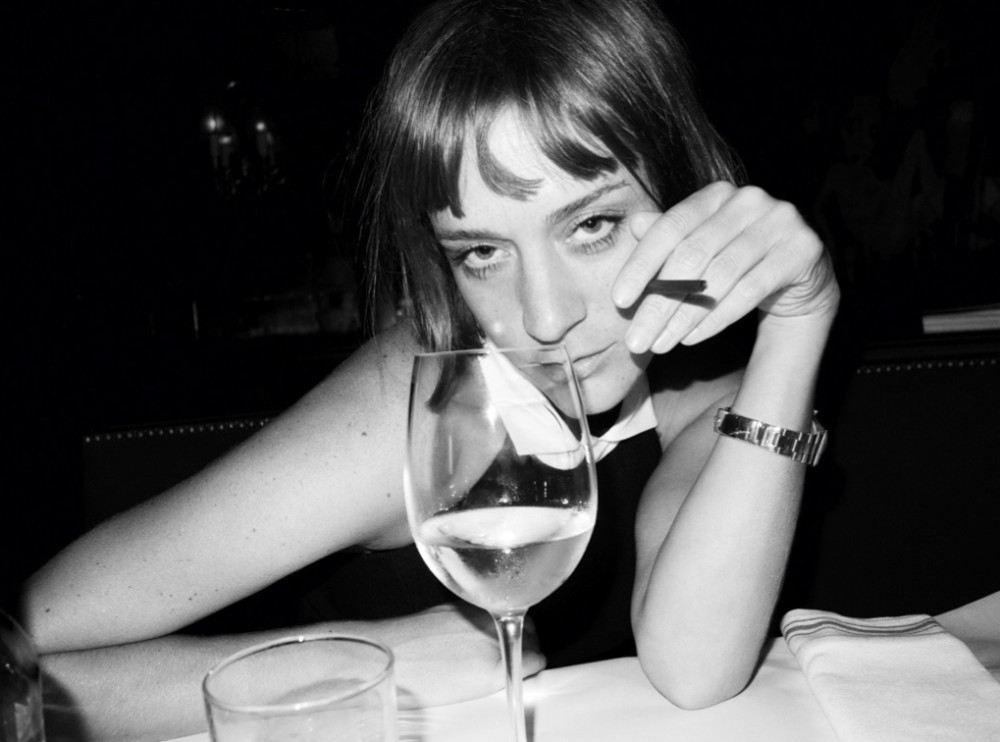 ©Olivier Zahm (Dinner with Chloë Sevigny at the Waverly Inn, New York, 2011)
©Olivier Zahm (Dinner with Chloë Sevigny at the Waverly Inn, New York, 2011)
AB: Is that all expressed in your magazine?
OZ: Yes, the whole magazine is an expression of hope that maybe we could combine nature and cul- ture. We could live in a more harmonious planet. Purple is a full color. It is all about harmony, com- bining unstable colors together: red, blue, and yellow, because life is unstable and difficult to balance.
AB: You have been doing the magazine for a while...
OZ: Yes, 23 years now.
AB: I read somewhere that Chloë Sevigny said that it used to have war, and that it has changed. How do you think it’s changed? How do you think you will change it in the future?
OZ: That’s difficult to say. What Chloë said is something pretty easy to say. This is a cliché: that my generation was noncommercial, that it was an alternative generation, a pure generation, a beautiful generation, fighting against commerce, industry, and competition for money. Incidentally, my generation has become as commercial, as industrial, as competitive, as obsessed with money as the ‘61 generation started to be in the ‘80s: the same as any generation in the business. Of course, Purple is not an alternative magazine anymore. It’s part of the system. Either you disappear because of your purity, or you survive because of your intelligence.
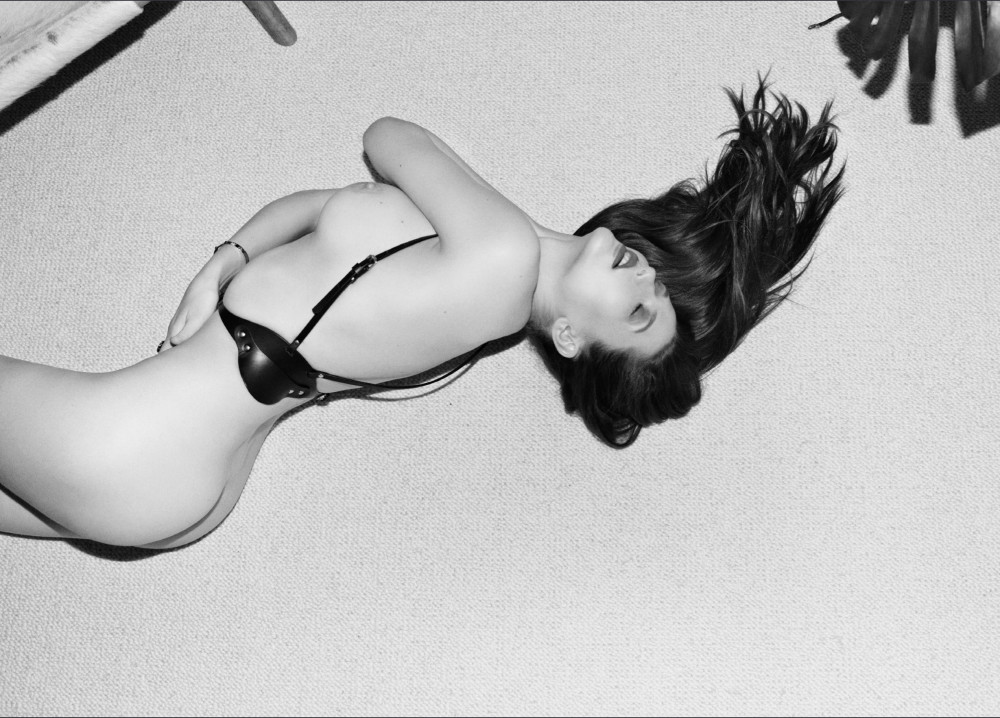 ©Olivier Zahm (Hea, Paris, 2014.)
©Olivier Zahm (Hea, Paris, 2014.)
AB: But I read that you don’t make revenue yet. Do you intend to?
OZ: Making revenue is not the goal, it’s not what I’m trying to do. If I was trying to make revenue, I would do another magazine. I would do Vanity Fair.
AB: So, why did you say that it’s not an alternative magazine?
OZ: What Chloë said about Purple is more nostalgia of the period when she was alternative. I still believe that Purple has an alternative position in the magazine industry. We don’t try to be commercial or make money, we try to develop interesting content for today, with artistic value. A permanent state of reorganization, of movement, of questioning, of instability: this is art, this is the way to keep the question open. If you don’t believe a little bit in this possibility, you are not a photographer, you are not a makeup artist, you are not an artist, you are not an interesting politician, you are not a good cook, and a terrible lover. We maintain the illusion that things could be slightly different. That’s why we are still on the alternative side of this business. We need the industry and we respect the industry, but the industry is not the beauty. So, I think that Chloë is wrong when she said that Purple changed. Purple didn’t change, we didn’t change. We won’t change, Chloë won’t change. The mission of a magazine like Purple is not to believe in the past and not to overestimate the present. Between the beauty of the past and the curse of the present, we are there, like everyone, trying to find what’s relevant today.
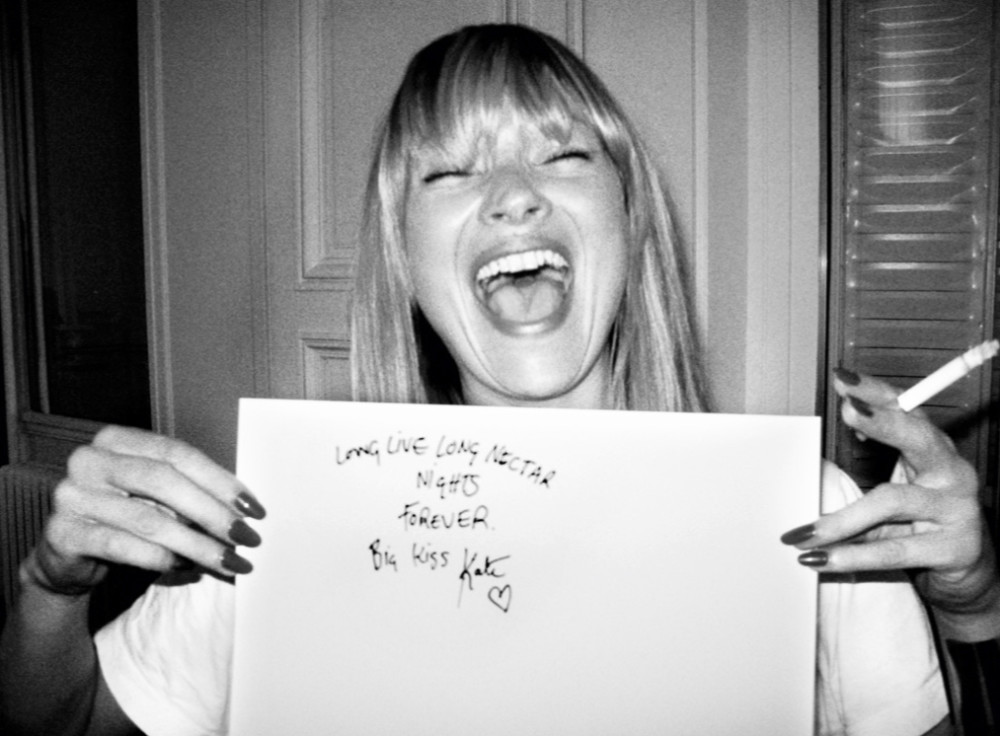 ©Olivier Zahm (Kate Moss at the Hemingway Bar, Ritz Hotel, Paris, 2008)
©Olivier Zahm (Kate Moss at the Hemingway Bar, Ritz Hotel, Paris, 2008)
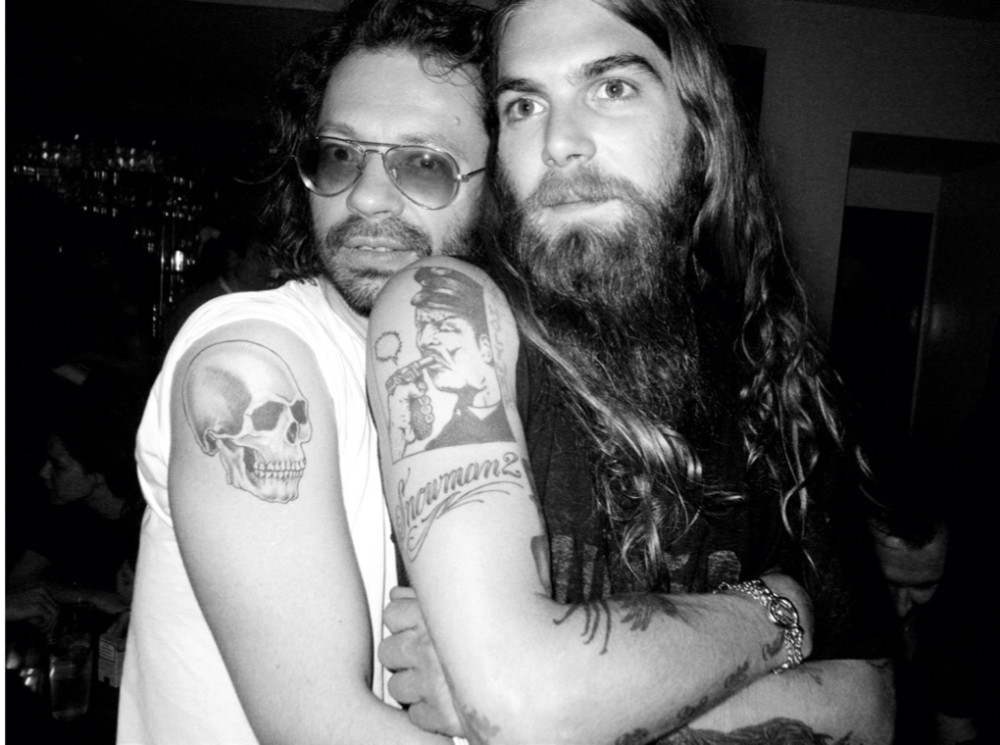 ©Olivier Zahm (Caption to come. xxxx)
©Olivier Zahm (Caption to come. xxxx)
AB: How does fashion figure into this equation?
OZ: Fashion is how the time looks fantastic, it’s how the moment looks exciting. Fashion can be any- thing as long as it’s under the spotlight. Fashion uses everything. Fashion is like an incredible vampire of form and attitude and images. Fashion is the way we deal with the present. I consider fashion as a very important element. Whatever is considered fashionable is an influence; we have to use this influ- ence and reinfluence the influence.
AB: I want to talk about your photography. I consider you to be a diarist, more or less.
OZ: That’s a good definition, yes.
AB: How have all these changes affected your photographs?
OZ: Because I believe this is the essence of photography: capturing your moment. It’s a window on a private life. If this window is open, a bigger picture can come in. If it’s a small window, we don’t have perspective; you just bumped into the person and that’s it. If you open your landscape larger, then you are a good photog- rapher. This is why Jürgen Teller is a very good photographer, and I am a small photographer. The perspec- tive and the landscape that Jürgen Teller offers is larger than mine. Maybe I’ll be better later, I started late.
AB: Do you consider yourself a photographer?
OZ: Yes, totally, now. I was hesitant before, always denying it. Now, I think I am.
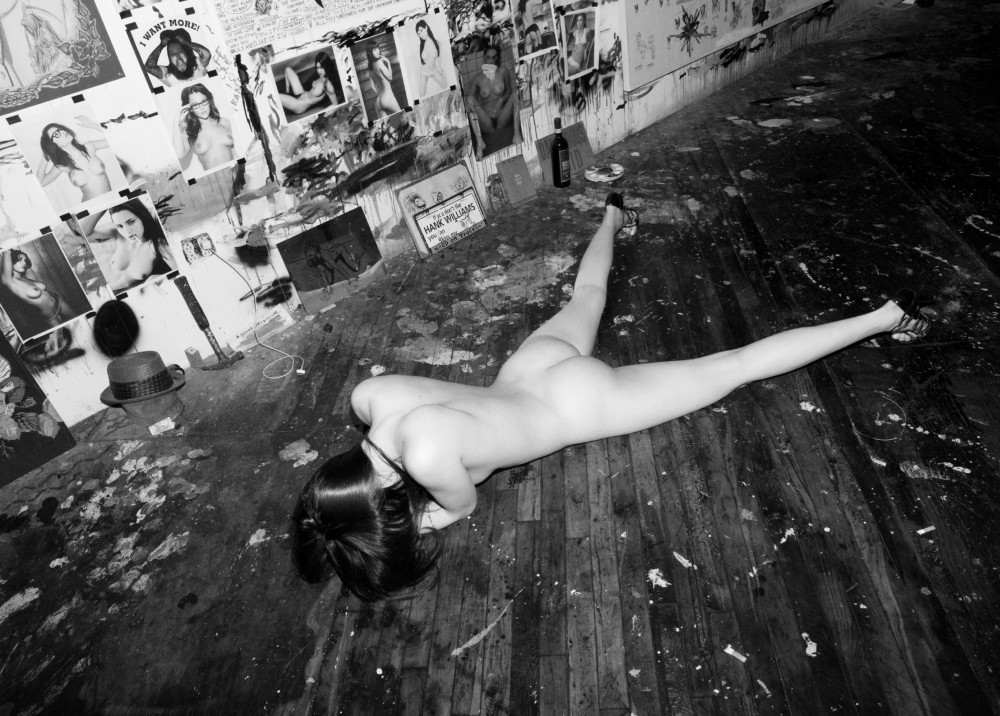 ©Olivier Zahm (Natalie White at Wes Lang’s studio, Brooklyn, 2012.)
©Olivier Zahm (Natalie White at Wes Lang’s studio, Brooklyn, 2012.)
AB: Because you were a journalist before...
OZ: And still.
AB: Your work has a journalistic style.
OZ: What I’m saying is photography is always autobiographical. If not, it’s geography, shooting the landscape. Or it’s military observation. Or sociological research. But photography as an art is about yourself. When I first got a digital camera, I started shooting myself with other people immediately.
AB: How much did you participate? Especially with the more sexy photographs. How much were you a participant besides just being behind the camera?
OZ: Are you asking if I am fucking the girl, too?
AB: Yes, I am.
OZ: There’s a big fantasy about that. We don’t start with the photography and then have sex. As soon as it’s a professional relationship there’s no way I will ever break this contract, because when a girl you don’t know comes to shoot with you and accepts to be naked, it’s a total trust. I will never break this trust by trying to touch the girl. As soon as you make a wrong move, the girl runs away, and she would be right to. It’s not only a question of reputation, it’s a question of personal etiquette. It’s a simple, obvious thing: you are there to get a picture, you are not there to get a girl. When I’m in front of a naked model who I don’t know, my obsession is getting a good picture. If I shoot my girlfriend, I can go farther, because we have an intimacy prior to shooting.
AB: What do you think about Terry Richardson?
OZ: Terry’s like me. The same. Even more professional than me, because he is in a higher professional position.
AB: There’s been a lot of controversy...
OZ: Yes, but wrong controversy. I don’t know what people have in mind. They have no idea what it is to take a picture, or what it is to be in that position.
AB: There was a time when men wanted to become photographers to get girls.
OZ: Yes, but it would be better to be a fireman to get girls.
AB: You do so many things. I really admire it. How are you able to do everything you do?
OZ: I’m just a catalyst. It’s not because of me, it’s because of the energy of these creative people who are willing to work for the magazine, to write for the magazine, to shoot for the magazine, to be in the magazine. That’s not me. A magazine is a collective work.
AB: But it’s your vision.
OZ: Yes, but I’m just pointing it in a certain direction, because everyone needs a direction, not just the people I’m working with. I also need to understand my vision through dialogue. I have a vision because I collaborate with people, and we both, through a dialogue on every subject, on every article, on every story, imagine together what’s the right direction to take. Hopefully, this ends up as a global vision, but it’s not initially my vision. I really believe that as soon as this creative community around Purple doesn’t exist, the magazine will disappear. So I’m expanding it, I’m opening it. It’s not a closed world.
AB: From what I’ve read, you take it upon yourself to do quite a bit. So you must enjoy it a lot.
OZ: Yes, I still enjoy doing the magazine. The difficult part of it is the economics, how to play the game without losing your soul or pleasure or your vision or your perspective, and how to make people un- derstand that if they invest in the magazine, there will be something in return. You have to explain to them, or show them, or prove to them that what you give them is actually better than what they were expecting from a simple marketing point of view.
AB: How do you do that?
OZ: It’s a question of making them understand that there’s not only one-way. There can be a different approach to celebrating a brand or product: to photograph or speak about it. Some brands understand, and some don’t or don’t care, and I respect that. But the ones I’m working with, hopefully, they’ll get interested. It’s not obvious, and it’s not necessarily easy. Sometimes they complain, but you have to cre- ate a dialogue with the industry. Without this dialogue there’s no possible understanding, and there’s no possible way of alternative approach.
AB: You’ve been doing this for a while, so something’s working.
OZ: Yes, but it’s constantly changing. There’s no recipe. Each time you have to propose different possi- bilities. I’m lucky that I started a magazine in a period when there was no Internet. Now that you have Internet, people want a fast and immediate return on their investment. When you advertise in Purple, if you’re there with me, we’ll construct a relationship and we’ll develop a common interest, and this needs time. This is what should be done with every brand actually. I don’t really work with brands that don’t want to take this time, who want an immediate return. If they do, I can’t construct anything, and it’s not satisfying for both parts. I don’t compromise myself. Brands invest in the magazine, and my responsibility is to look at the brand and see how I can work them and their product.
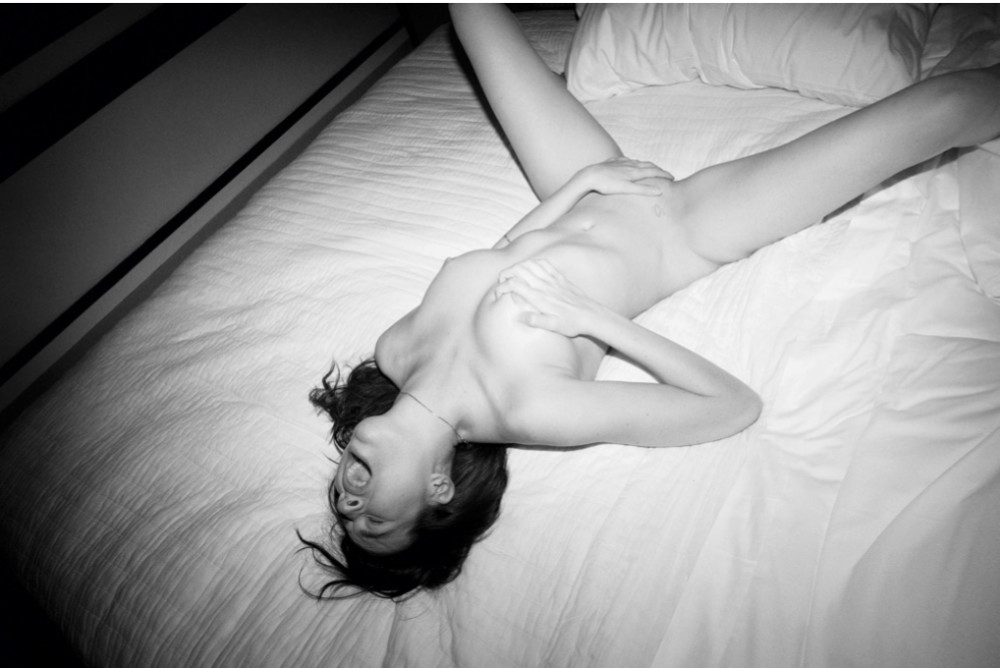 ©Olivier Zahm (Natalie White at The Standard, High Line, New York, 2012)
©Olivier Zahm (Natalie White at The Standard, High Line, New York, 2012)
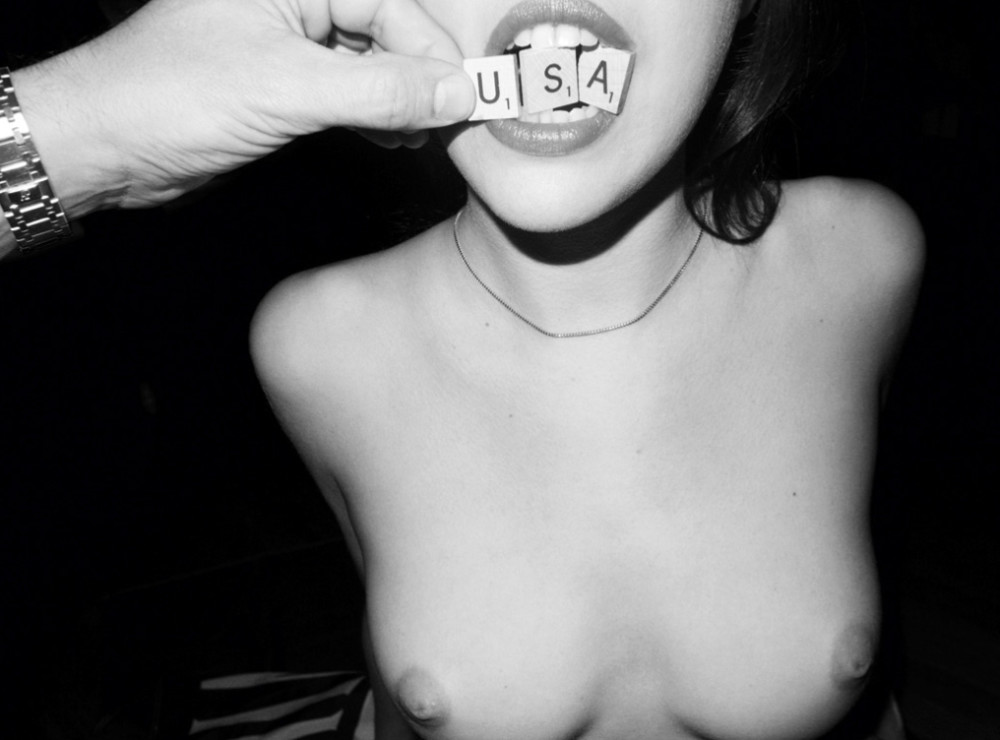 ©Olivier Zahm (Natalie White, New York, 2011)
©Olivier Zahm (Natalie White, New York, 2011)
AB: Do you think that by you being a brand yourself, it helps the magazine as a brand?
OZ: I don’t know if I’m a brand, but I have to push my name next to the magazine because people need to understand who’s behind it all. Purple is still existing, because it’s connected to me and if there’s a prob- lem, people go straight to me. If I wasn’t there next to the magazine, the magazine would be just a media that reflects the moment. I consider the magazine as being connected to a creative community where I’m in a personal relationship with as many people as I can. But it’s hard, because now we’re becoming bigger and I can’t know everyone that works for me. I try my best to have a personal relationship with everyone who contributes because this is the way you maintain the right direction for the magazine. It can’t be just a team of people, it has to be personal. If you’re not there personally, it loses value quickly.
AB: Your photography is very much a part of the magazine, who you are is very much a part of the magazine, your social life is very much a part of the magazine. It’s all one.
OZ: This is why I always consider photography a form of trust. When you shoot someone, you deliver a message of something that you share. You share something. Even if you photograph a landscape or the sea or a mountain, you share a common message with the landscape or with the sea or with the tree that you photograph. This is why, to go back to nudity, I am extremely respectful. Because when I shoot a naked girl, she delivers a message for modern art. This message is to be right and true. If you force a person to an attitude, or to be someone else for your photography, you can feel it immediately in the photography. You will never get a good photograph. When I’m shooting a person, I like to see how they react in front of me. What are we trying to say with the photograph? This you can’t predict, you discover on set, at the moment you shoot. And what is true in the photographic moment is also true in the magazine. The magazine is a place to share a common message with the people who work with you. Same thing with the brand, what do you share with them? Everything coexists. The connection is where creativity happens. It’s a permanent collaborative process.
AB: I saw a photograph that you took. You were in an elevator, and you took a photograph of the buttons on the panel to the floor. Most of the pictures I see of yours are of people, girls, whatever. But I haven’t seen many like the one I just described, and when I saw that one, it elevated you in my eyes as a photographer, because it told me you could do more, there could be more diversity. In your book, do you have pictures like that?
OZ: I like to shoot architecture, landscape, and objects. Anything that really speaks to me. And stairs, I don’t know why I like stairs.
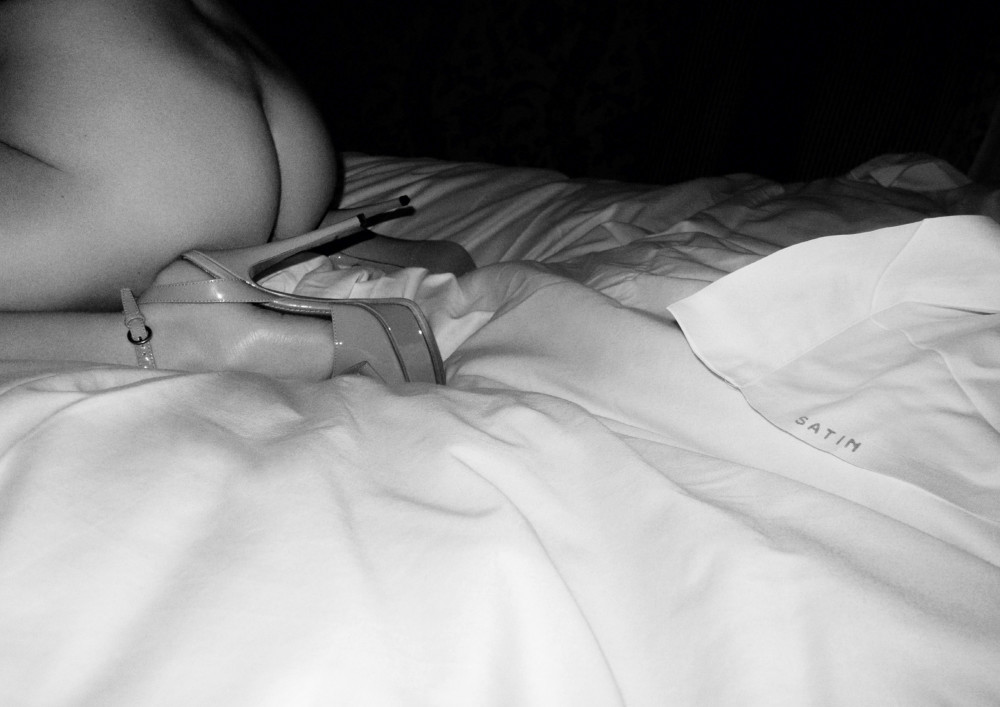 ©Olivier Zahm (“Satin,” Paris, 2009)
©Olivier Zahm (“Satin,” Paris, 2009)
AB: Where do you see yourself five years from now?
OZ: Honestly, I don’t know. It’s really hard to tell. My life is done already. I’m 50. I won’t be in another place. I’m surprised that some people can stop something and then create something totally new. I want the magazine to survive, I want to continue to do photography and become better. I want to de- velop other Purple publications. I want to develop a Purple Travel, maybe do Purple Sex again; maybe I’ll do a Purple Gallery, which I still have in mind.
AB: What do you mean by Purple Travel?
OZ: A travel magazine...
AB: Oh, you mean opening up different types of magazines...
OZ: Yes, or Purple Sex is a sex magazine that I used to do in the past. So I may do more publication in addition to Purple Fashion. I may do some other activities, like an art gallery. I may do more activities, or I may reduce them. But I won’t reinvent myself.
AB: Well, you do so many things; it’s not necessary to reinvent yourself.
OZ: Actually, there’s no “myself” in the sense that I’m always in between everything. I’m circulating, chang- ing, communicating. I don’t like the feeling that I am myself in front of world. I’m in the middle of every- thing. As long as you have the energy and the optimism, there’s no reason to change. I don’t really believe in change. I believe in evolution. I’ll be the same in five years, so let’s do another interview in five years.

